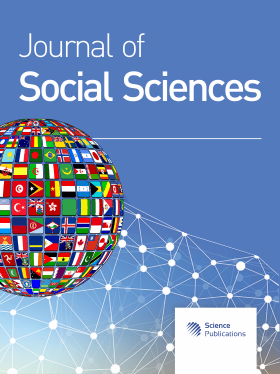Community Participation Tourism Management Model of Tapee Plain Community
Abstract
Problem statement: Cultural tourism plays an important role in the economy system of Thailand. This study, therefore, aims to investigate the following: (1) The tourism conditions in the community of Taa-Pee River Basin and also; (2) The possible guideline of organizing the cultural tourism, by all means, seeking active cooperation among the Taa-Pee River Basin community people who subsist or have been subject to the river basin and the surrounding conditions. Approach: This research was conducted in Surat-Thani Province. The sample consisted of 370 subjects obtained by Specified Random Sampling. The instruments used in data collection included the interview form and the observation forms constructed by the researcher. The data were also gathered by means of the Focus Group Discussion and the Participatory Workshop. The data obtained were then examined by the Qualitative Analysis. Then, the examined data were presented in Descriptive Analysis. Results: The results obtained and examined indicated the following: (1) The Taa-Pee River Basin community had long been the international trade/commercial center into which the transactions between the Arabian nations and China had entered into from the time before the seventh B.E. Most of the community people were of Sino-Thai, Semang and Malayan. They earned their living by doing agricultural farms or fishery. The community had their own outstanding unique, typical identity, advantageous for tourism. (2) The important problems of tourism management included the following: the tourist attractions were not fascinatingly attractive; There were few tourism activities; The tourism attractions were scarcely pioneered, renovated, improved and developed; Lack of exact personnel in charge who could be consecutively on duty; Lack the central sector to do the work related to management and providing massive wholeheartedly support. In brief, such deficiency accounted for the imperfect tourism management. (3) The form of managing cultural tourism focusing on/providing the Taa-Pee River Basin community people with a great extent of full participation. The actual/significant elements of managing the community’s participation-based cultural tourism. The focal factors of management included vision, mission, strategy, tour activities, objectives/goals and the conditions of achievement which accounted for tourism being managed to meet the tourists’ needs on the principal basis of maintaining and keeping up with the natural resources and environment. The crucial point to be aware of was the strong determination to further inherit/pass on the Taa-Pee River Basin’s folks’ wisdom and ways of living Consequently, every part/person in the community was required to share a cooperative task. Conclusion: As part of the encouragement of cultural tourism there should be a proctoring measure to help control, look after and supervise the tourism resources and as well partially share all of its benefits. Last but not least, precisely determine to keep up with their sustainable advantages.
DOI: https://doi.org/10.3844/jssp.2011.274.279

- 6,053 Views
- 4,048 Downloads
- 0 Citations
Download
Keywords
- Community participation
- tourism management model
- Tapee plain community
- cultural tourism
- qualitative analysis
